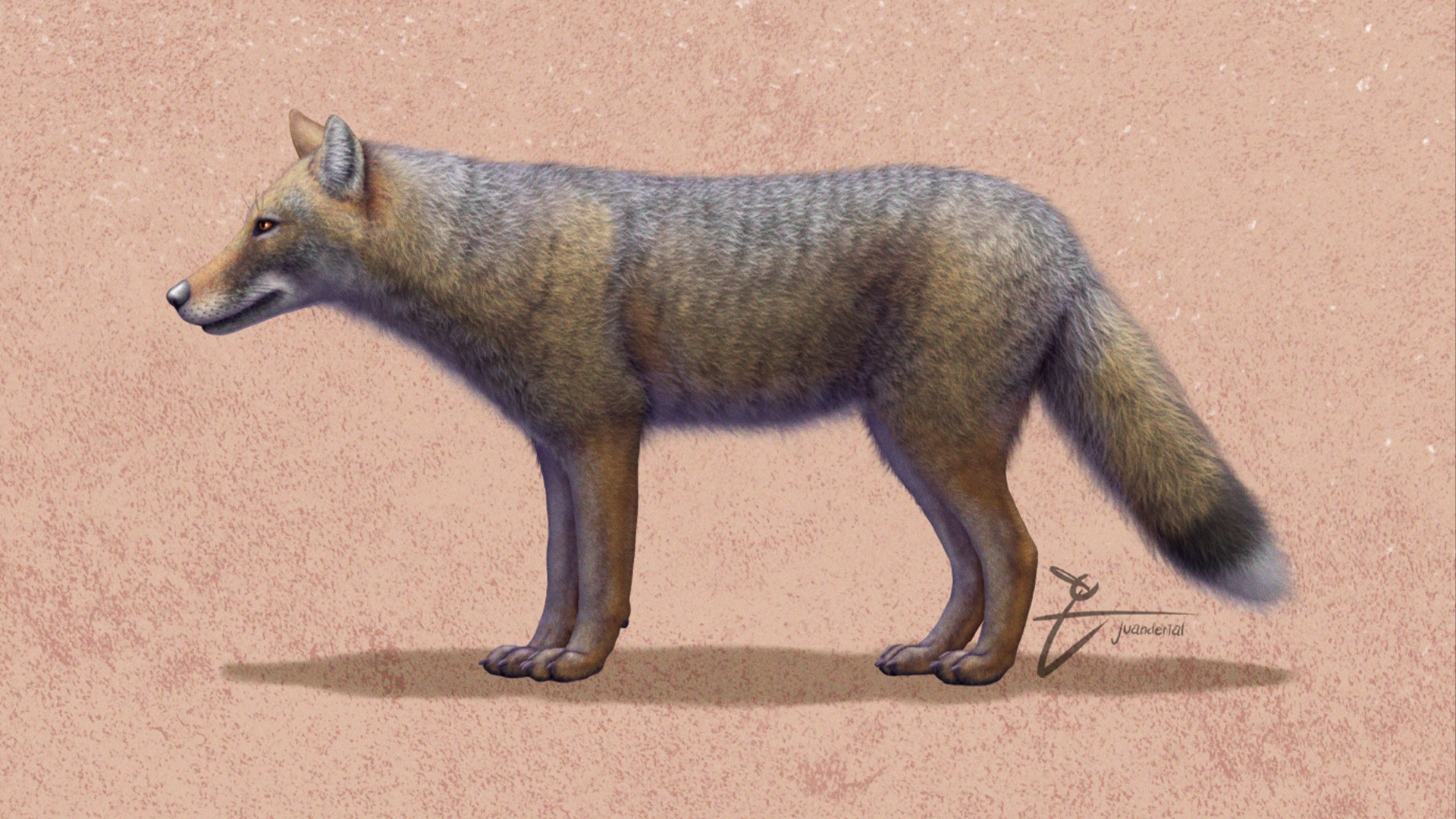
Hunter-gatherers in what is now Patagonia, Argentina, kept foxes as pets before the arrival of European dogs about 500 years ago, a new study suggests. In some cases, the ancient people were so closely bonded with their pet foxes that they were even buried with them.
And while it's previously been proposed that modern dogs in the region are a mixture of foxes and dogs, that probably isn't the case — instead, it seems the foxes died out completely.
The new study, published Wednesday (April 10) in the journal Royal Society Open Science, describes the examination of a grave at the Cañada Seca site, about 130 miles (210 kilometers) south of the western city of Mendoza.
Discovered in 1991, the site holds bones from at least 24 people, including children, and their personal belongings, such as necklace beads, stone tools, and tembetás or lip ornaments. Previously calculated radiocarbon dates suggest they lived there about 1,500 years ago.
One grave also holds the partial skeleton of a fox, which the study identifies for the first time as a Dusicyon avus — an extinct species closely related to the Falkland Islands fox or wolf (Dusicyon australis) that went extinct in the 19th century.
Related: 1,500-year-old burial of lynx with 4 dogs stacked on it puzzles archaeologists
The fox seems to have been deliberately buried alongside the person in the grave — only the second such find in South America, University of Oxford zooarchaeologist Ophélie Lebrasseur told Live Science.
"It probably had some sort of deep relationship with the hunter-gatherer society and that individual in particular," she said.
Lebrasseur is a co-author of the new study, which was led by molecular biologist Cinthia Abbona of Argentina's Institute of Evolution, Historical Ecology and Environment (IDEVEA) in Mendoza.
Foxes as pets
Initially, researchers thought that the fox bones at the Cañada Seca site were from a specimen of the Lycalopex genus of South American foxes.
In the latest study, however, the team carried out precise measurements of its dimensions and an ancient DNA analysis, which showed it was instead a Dusicyon avus.
An analysis of the carbon and nitrogen isotopes — variations of elements that have different numbers of neutrons in their nuclei — in the fox bones indicated that the animal had eaten a plant-rich diet similar to that of the person in the grave, Lebrasseur said. Wild foxes usually ate much more meat; this suggests that the fox in the grave was eating whatever the human ate, Lebrasseur said.
"The most plausible explanation is that this fox was a valuable companion to the hunter-gatherer groups," the authors wrote in the study.
"Its strong bond with human individuals during its life would have been the primary factor for its placement as a grave good after the death of its owners or the people with whom it interacted," they wrote.

Extinct species
Dogs (Canis familiaris) started entering the South American continent with people about 4,000 years ago, Lebrasseur explained, but by 3,000 years ago their spread seems to have stopped north of Patagonia.
As a result, the first evidence of dogs in the region is from the 16th century, when some Indigenous societies started breeding dogs of European descent.
But it now seems unlikely that modern dogs in the region could have descended from a mixture of the dogs and foxes, as previously thought, she said.
DNA analysis of the Cañada Seca fox indicated that most of its offspring with dogs would have been infertile.
Rather than being absorbed into the dog population, it seems that Dusicyon avus went extinct from changes in the climate as its habitats were taken over by humans, which happened around the time of the arrival of European dogs into the region, Lebrasseur said.







